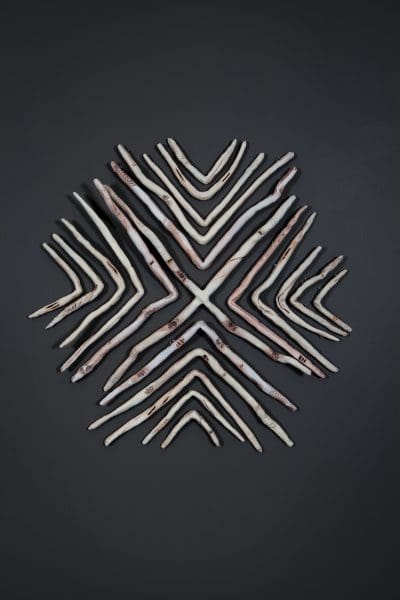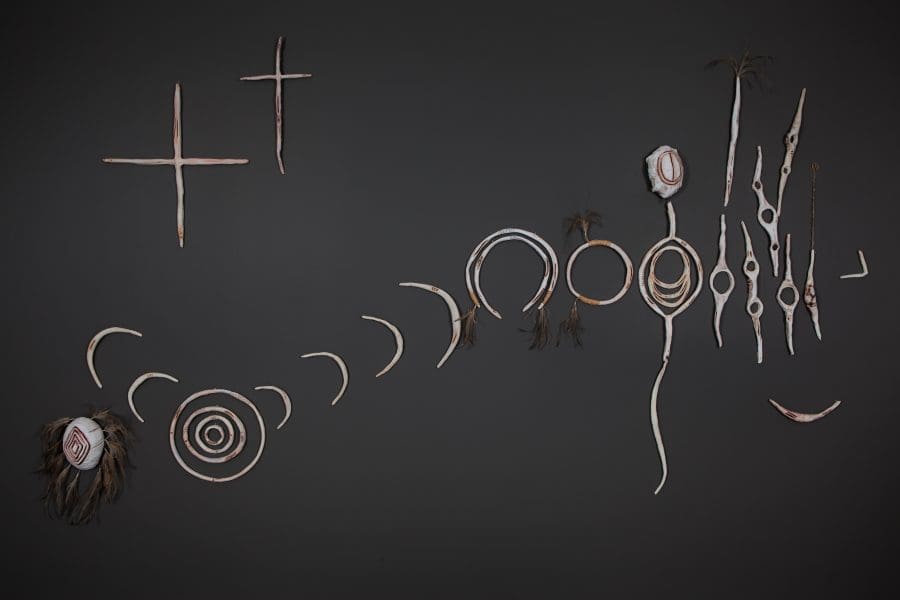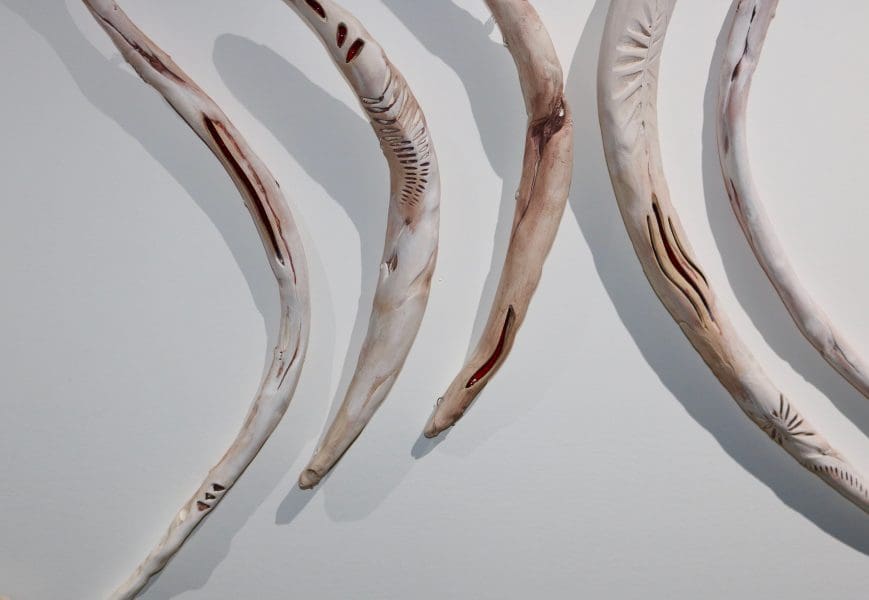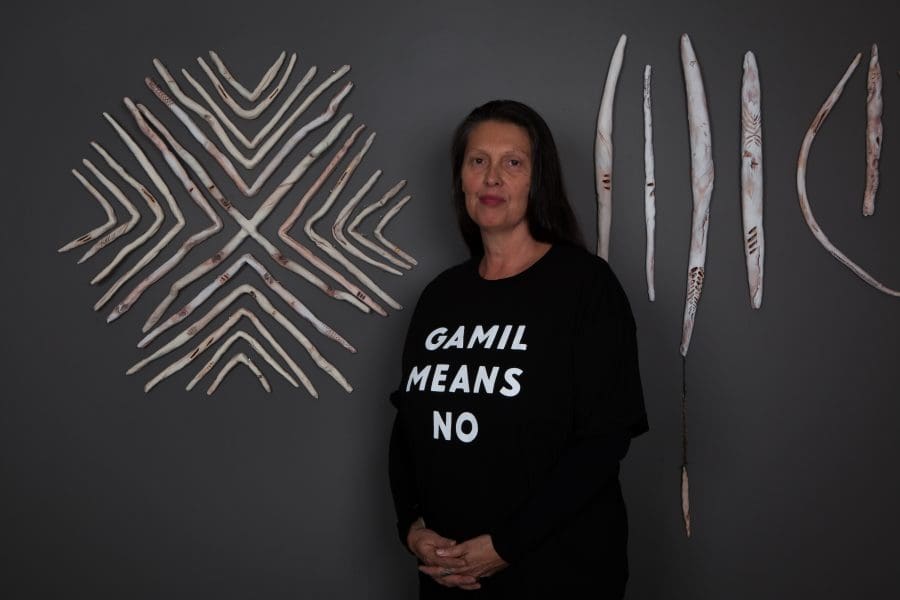
Making Space at the Table
NAP Contemporary’s group show, The Elephant Table, platforms six artists and voices—creating chaos, connection and conversation.





Scars are evidence of injury, but they are also a mark of healing, resilience and survival. Penny Evans draws on the emotional implications of both of these meanings in her haunting solo exhibition of ceramic works, Language of the Wounded, at Lismore Regional Gallery.
Evans describes herself as a descendant of an Aboriginal woman and a freed convict man, and she lists her heritage as Gamilaraay/Gomeroi, Welsh and German. Although she is known for ceramics which feature bold graphic patterns that reference Indigenous carving traditions, she also acknowledges the importance to her practice of her familial links to what Judy Atkinson calls the three ‘I’s: Indigenous, Invaders and Immigrants.
For Evans, this intersection has made itself manifest in the mark of an ‘X’ which she uses over and over in her work, and which can be seen writ large in Language of the Wounded in a wall piece titled, Grandmother’s Mark, 2020. “As a person of mixed descent, when I realised the relevance to my black and white heritage, it was like an integration occurred internally for me, another healing stepping stone,” said Evans in her artist’s statement.

In Language of the Wounded, the ceramic works which Evans has scattered across the dark gallery walls resemble both a cryptic script – the language of the title – and the bones of animals or the ossified remains of trees. But even though her sculptures appear to be ancient, or even almost timeless, they are very much about the present and the future, as well as the past.
By drawing our attention to both wounds inflicted and the capacity for these wounds to heal, Evans highlights the toxic legacy of invasion, the endurance and flexibility of Indigenous culture and the responsibility we all have – Indigenous, invader, immigrant, or some combination thereof – to work towards an equitable, decolonised society. Made from clay, a medium composed of earth, they have a deep and literal connection to the notion of Country. And in Language of the Wounded Penny Evans is asking us to consider what kind of country we want to inhabit now, and create for future generations.
Language of the Wounded
Penny Evans
Lismore Regional Gallery
22 August – 1 November